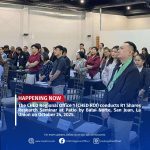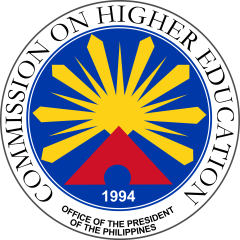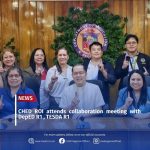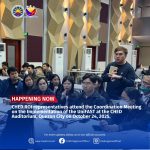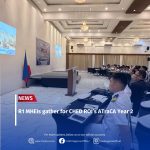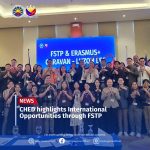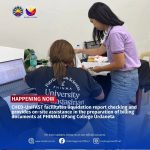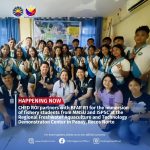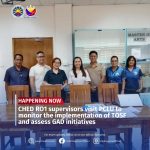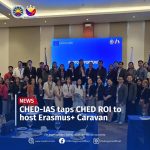The eight Maritime Higher Education Institutions (MHEIs) in the region convened for the second time for the CHED ROI-initiated Maritime Advancements through Training and Collaboration Assembly (ATraCA), which featured a learning exchange visit on September 12, 2025, and a two-part faculty and student symposium conducted on October 9 and 20, 2025.
The activity highlighted the importance of sustainable maritime education and aimed to support MHEIs in their academic endeavors that align with the goals of the International Maritime Organization (IMO) in terms of education and training.
For the learning exchange visit, CHED ROI officials, along with MHEI representatives, went to the Philippine Merchant Marine Academy (PMMA) in San Narciso, Zambales, and were received by PMMA Superintendent Joel Abutal.
They engaged in benchmarking discussions with the PMMA’s key officials.
During the two-part symposium, CHED ROI Director Christine Nabor-Ferrer and OPSD OIC-Chief Education Program Specialist Jorel Ramirez rendered their message of support.
“CHED will always be your partner in producing an educationally qualified workforce. We continue working together, align our efforts, share our expertise, and uphold the values of integrity, excellence, and service,” said Director Ferrer.
Referring to the theme “Gearing up Maritime Education in Research, Industry Partnerships, Professional Learning Engagements, and Sustainability”, Mr. Ramirez mentioned that it was aligned with the demands of quality maritime education and that quality assurance is not a checkpoint but a sustainable journey.
On the first part of the symposium, C/Eng Jonathan Seguritan, MARINA Maritime Education and Training Standards Supervisor, Engr. Felix Oca, PAMI Chairman, and C/Engr. Ronnie Basco, PMMA Assistant Superintendent for Administration and Finance, capacitated MHEI faculty members and administrators on the trends and issues of the maritime industry, quality governance, and green initiatives in the higher education landscape.
Maritime student leaders also attended the said symposium featuring speakers involved in maritime education and training.
Mr. Dan Aldrich Tolentino, Training Manager of Sharjah Maritime Academy, presented engagements for cadets to adapt to the emerging technologies of the industry, while Ms. Mary Ann Pastrana, Chairperson of APSTII, discussed social media ethics and awareness.
Further, Mr. Glenn Mark Blasquez, Chief Operations Officer of SIMS Training Center, addressed coping strategies and mental health awareness.
Finally, Dr. Amapola Villar-Zapanta, Overseas Workers Welfare Administration (OWWA) Head of Education and Training Unit, outlined the agency’s support programs available to seafarers.
Dr. Danilo B. Bose, Chief Education Program Specialist, Dr. Angelica Q. Dolores, Supervising Education Program Specialist, Dr. Myrelle Faith D. Mina, Education Supervisor, and Mr. Kotaro Jncyrl Q. Velasco, Project Technical Staff II, spearheaded ATraCA.
